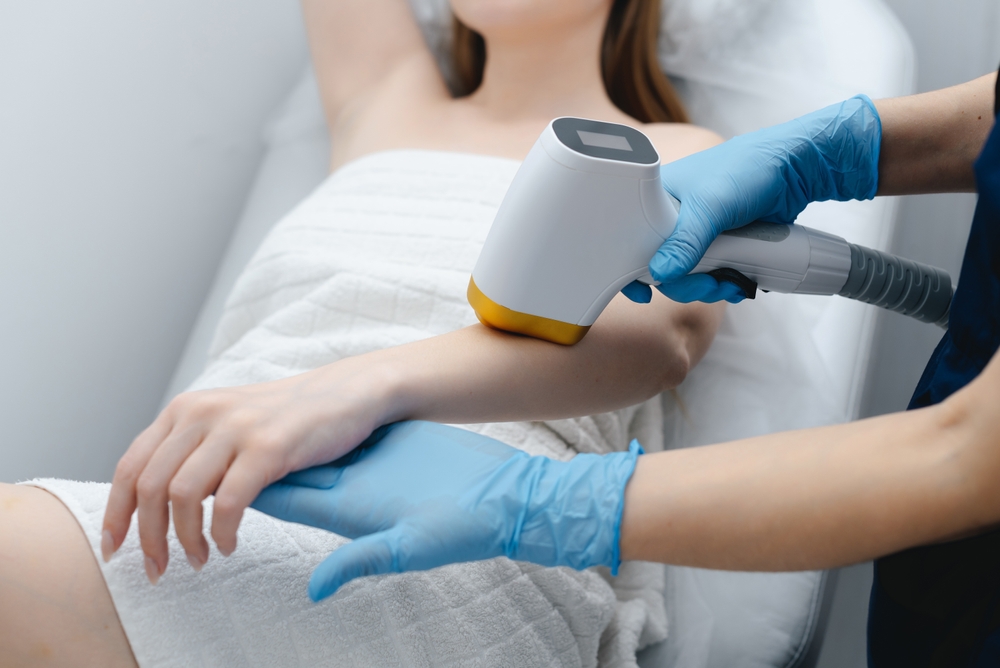Unlocking the Power of Laser Skin Treatment: A Comprehensive Guide
Laser skin treatment has revolutionized the field of dermatology, offering a non-invasive solution to various skin concerns. This advanced technology harnesses the power of focused light to target specific skin issues, promoting rejuvenation and addressing a wide range of dermatological conditions. From reducing fine lines and wrinkles to treating acne scars and pigmentation, laser treatments have become increasingly popular among those seeking to improve their skin's appearance and health.

The principle behind laser skin treatment is selective photothermolysis, where the laser’s energy is absorbed by specific chromophores (color-bearing molecules) in the skin. This absorption causes controlled damage to the targeted area, stimulating the body’s natural healing process and promoting collagen production. As a result, the skin undergoes regeneration, leading to improved texture, tone, and overall appearance.
What skin conditions can be treated with laser therapy?
Laser skin treatments are versatile and can address a wide range of dermatological concerns. Some of the most common conditions treated with laser therapy include:
-
Fine lines and wrinkles
-
Acne scars and other types of scarring
-
Sun damage and age spots
-
Uneven skin tone and texture
-
Hyperpigmentation and melasma
-
Vascular lesions, such as spider veins and port-wine stains
-
Unwanted hair growth
-
Tattoo removal
The effectiveness of laser treatment can vary depending on the specific condition being addressed and the individual’s skin type. A consultation with a qualified dermatologist is essential to determine the most appropriate laser treatment for each patient’s unique needs.
What are the different types of laser skin treatments available?
There are several types of laser skin treatments available, each designed to target specific skin concerns. Some of the most common types include:
-
Ablative lasers: These lasers remove the outer layer of skin, promoting significant skin resurfacing. Examples include CO2 and Erbium YAG lasers.
-
Non-ablative lasers: These lasers work beneath the skin’s surface, stimulating collagen production without removing the top layer. Fraxel and Nd:YAG lasers are examples of non-ablative treatments.
-
Fractional lasers: These lasers create microscopic treatment zones, leaving surrounding tissue untouched for faster healing. They can be either ablative or non-ablative.
-
Pulsed-dye lasers: These are particularly effective for treating vascular lesions and redness.
-
Q-switched lasers: These are often used for tattoo removal and treating pigmented lesions.
The choice of laser treatment depends on the specific skin concern, the patient’s skin type, and the desired level of downtime and results.
What should you expect during a laser skin treatment session?
A typical laser skin treatment session begins with a thorough cleansing of the treatment area. Depending on the type of laser and the area being treated, a topical anesthetic may be applied to minimize discomfort. Protective eyewear is provided to shield the eyes from the laser light.
During the treatment, the practitioner will move the laser device across the targeted area. Patients may experience sensations ranging from mild warmth to brief, sharp pinpricks. The duration of the session can vary from a few minutes to over an hour, depending on the size of the treatment area and the specific procedure being performed.
Post-treatment, patients may experience redness, swelling, or a sensation similar to a mild sunburn. These effects are typically temporary and subside within a few hours to a few days, depending on the intensity of the treatment.
What are the potential risks and side effects of laser skin treatments?
While laser skin treatments are generally safe when performed by qualified professionals, there are potential risks and side effects to consider:
-
Temporary redness and swelling
-
Changes in skin pigmentation (hyperpigmentation or hypopigmentation)
-
Scarring (rare)
-
Infection (uncommon)
-
Burns or blistering (if the treatment is not performed correctly)
-
Reactivation of herpes simplex virus (cold sores)
To minimize these risks, it’s crucial to choose a reputable clinic with experienced practitioners. Following pre and post-treatment care instructions is also essential for optimal results and minimizing side effects.
How much do laser skin treatments typically cost?
The cost of laser skin treatments can vary significantly depending on several factors, including the type of laser used, the size of the treatment area, the number of sessions required, and the geographic location of the clinic. Here’s a general overview of pricing for some common laser treatments:
| Treatment Type | Average Cost per Session | Typical Number of Sessions |
|---|---|---|
| Fractional Laser Resurfacing | $1,000 - $2,500 | 3-5 |
| IPL (Intense Pulsed Light) | $300 - $600 | 3-6 |
| Laser Hair Removal | $200 - $800 | 6-8 |
| Tattoo Removal | $200 - $500 | 6-10 |
| Acne Scar Treatment | $300 - $1,000 | 3-5 |
Prices, rates, or cost estimates mentioned in this article are based on the latest available information but may change over time. Independent research is advised before making financial decisions.
Many clinics offer package deals for multiple sessions, which can provide cost savings. It’s important to note that while some laser treatments may show immediate results, others may require multiple sessions for optimal outcomes. Additionally, maintenance treatments may be necessary to preserve results over time.
When considering laser skin treatments, it’s essential to prioritize the expertise and qualifications of the practitioner over cost alone. A consultation with a board-certified dermatologist or licensed aesthetician can provide a personalized treatment plan and accurate cost estimate based on your specific needs and goals.
This article is for informational purposes only and should not be considered medical advice. Please consult a qualified healthcare professional for personalized guidance and treatment.






